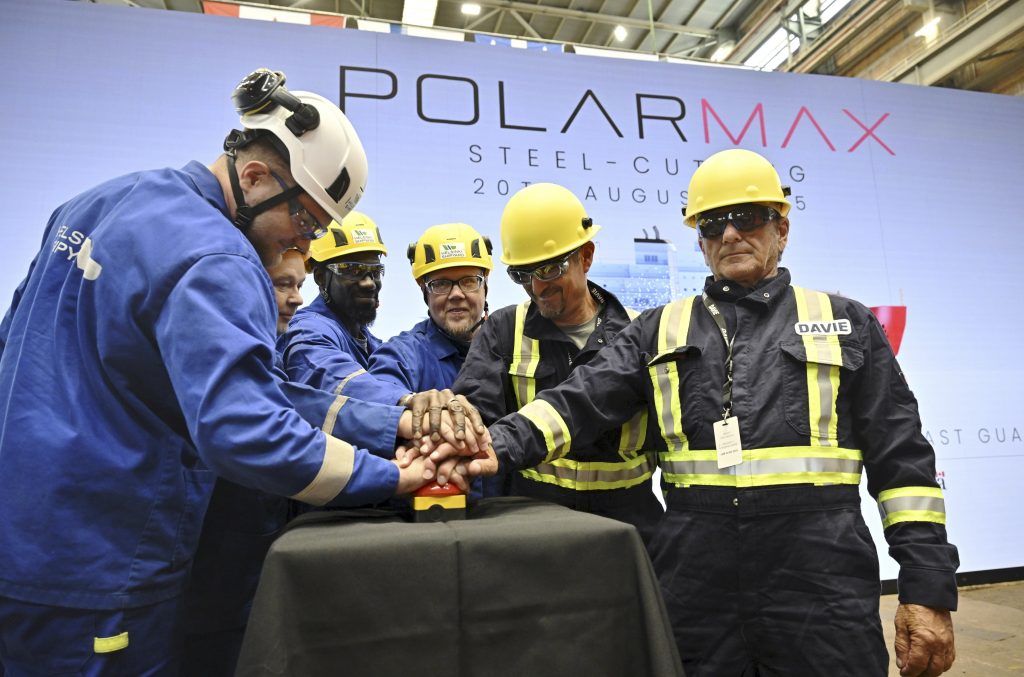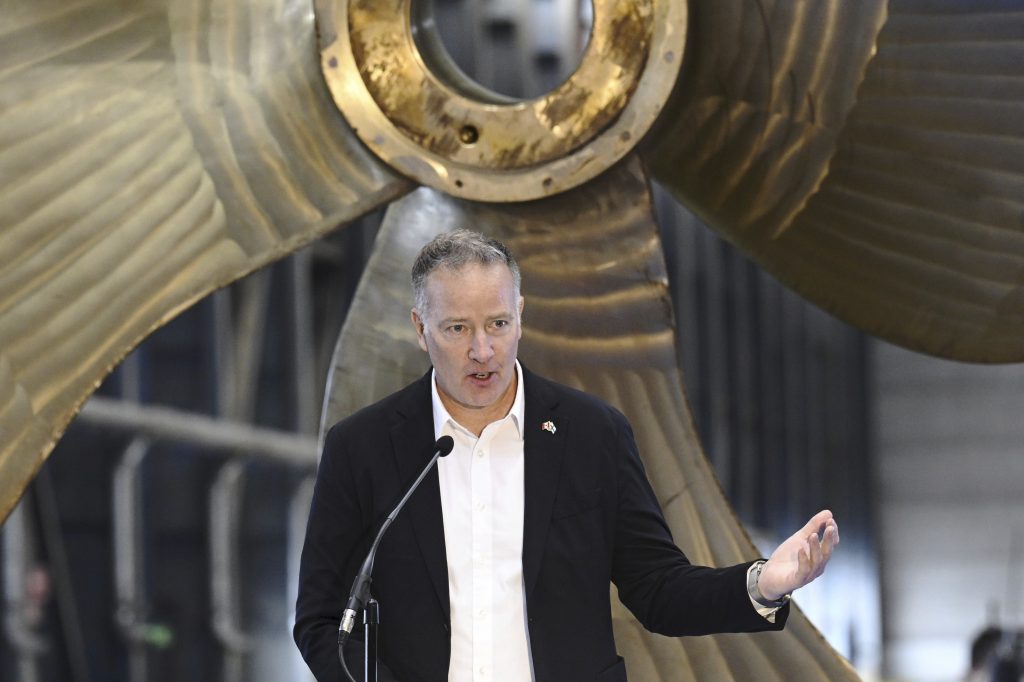Work begins in Finland on a new Canadian icebreaker for Arctic defence

Dignitaries at a steel-cutting ceremony Wednesday in Finland marked the start of work on a new Canadian icebreaker to be named the Polar Max and aimed at bolstering Arctic defense.
The event marked the concrete beginning of a trilateral partnership of the United States, Canada and Finland announced by the White House in July 2024 to bolster defenses in a region where Russia has been increasingly active.
Russia has vastly more icebreaker ships than the U.S. and Canada at a time when climate change has made the remote but strategically important Arctic more accessible.
The Icebreaker Collaboration Effort, or ICE Pact, aims to leverage Finland’s advanced shipbuilding expertise and technologies to help meet U.S. and Canadian demand for new icebreakers.
Canada’s minister for defense procurement, Stephen Fuhr, said his country is bringing its coast guard into the military and that investing in the Arctic is important for the future.
“The North is opening up, there are many reasons to be up there,” Fuhr said. “There’s security issues, resource development.”
The hull will be built at Helsinki Shipyard before being transported to Canada where it’s expected to be completed in Levis, Quebec by 2030.

Quebec’s Economy Minister Christopher Skeete highlighted the benefits of cooperating on the building of the new icebreaker.
“It’s a partnership and we have a shared responsibility for the North, so this is a unique and very opportune partnership that allows us to leverage the strengths of both our countries in terms of maritime Arctic protection,” he said.
“The North is becoming more and more accessible, there are more and more rivalries in the North, and so we have to be prepared to assert our sovereignty out there,” Skeete added.
During a NATO summit in June, U.S. President Donald Trump said Finland was the “king of icebreakers” and suggested the U.S. might be willing to buy as many as 15 of them, including the used icebreaker that Trump said might be immediately available.
“We’re trying to make a good deal,” Trump said.

According to a U.S. Government Accountability Office report, the U.S. hasn’t built a heavy polar icebreaker in almost 50 years. The last remaining one in service is the 399-foot Coast Guard Cutter Polar Star commissioned in 1976.
During a talk in February at the RAND research organization, U.S. Coast Guard Vice Admiral Peter Gautier said the agency has determined it needs eight to nine icebreakers – a mix of heavy polar security cutters and medium Arctic security cutters.
Building an icebreaker can be challenging because it has to be able to withstand the brutal crashing through ice that can be as thick as 21 feet (6.4 meters) and wildly varying sea and air temperatures, the report said.
Related stories from around the North:
Canada: Canada, Finland signal Arctic priorities with new strategic partnership, CBC News
Russia: New New Shipping, Rosatom to build container ships for year-round Arctic sailings, The Independent Barents Observer
United States: U.S. Coast Guard tracking Chinese research vessels in Arctic, Eye on the Arctic



